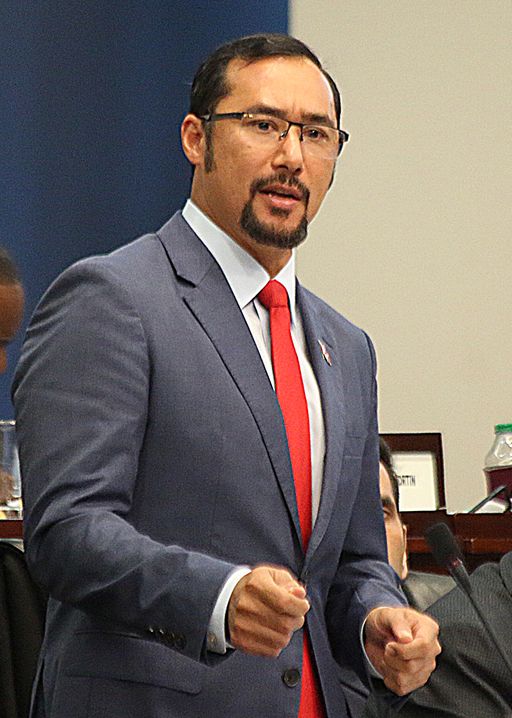(Trinidad Express) Energy Minister Stuart Young says no site has been identified for the disposal of the 60,000 barrels of waste from the oil spill which took place off the shores of Tobago.
He said the Ministry of Energy was calling in experts who are accustomed to dealing with these types of issues to get a comprehensive plan to put into action to safely remove the 60,000 barrels of waste currently stored in pits at Studley Park.
He was responding in the House of Representatives to an urgent question from Couva North MP Ravi Ratiram to outline the specific measures being undertaken to ensure the immediate and safe disposal, in light of the Tobago House of Assembly Chief Secretary’s urgent warning of a possible environmental disaster.
Young said from the time that the overturned, unmanned, unclaimed vessel was discovered off the shore of Tobago on the Atlantic side, the THA claimed jurisdiction over the response for the oil spill.
He said the Ministry of Energy made itself available along with the expertise it was able to gather and garner.
He said a decision was taken that the THA would manage the onshore clean-up operations while the Ministry of Energy would manage the dealings relating to the offending vessel, and the removal of the hydrocarbon fluids that were in the vessel.
He said this has continued and shortly there should be some good news with respect to the full removal of the vessel from the reef and its towing to shore to then be disposed of.
However, Young said there was always an element of concern with respect to the temporary facilities that were created at Studley Park where all of the waste collected from onshore was then disposed of in pits that were created under the jurisdiction and the authority of the THA.
He said as of June 4, the THA has approached the Ministry of Energy seeking assistance arising out of concerns over the potential environmental hazard that it created at Studley Park.
Asked by Ratiram what was the treatment for the removal of the waste, Young said this waste was a combination of the sea water and other liquids mixed with the hydrocarbons that had leaked from the vessel.
“It is a combination of things,” he said, adding that it was 60,000 barrels of waste, not oil.
“It is sea water, seaweed, sand, everything along with some hydrocarbons,” he said.
Asked to say whether a remediation site had already been identified for this waste, Young said there was no remediation, it was removal.
He said he was not aware of any site being identified for the safe disposal of the waste.
“I always get a little worried when I hear certain members asking these questions and it sends a little red flag to make sure that there are not people trying to influence sites that they may be put into it. As far as I am aware, at this stage, no site has been identified,” Young said.






